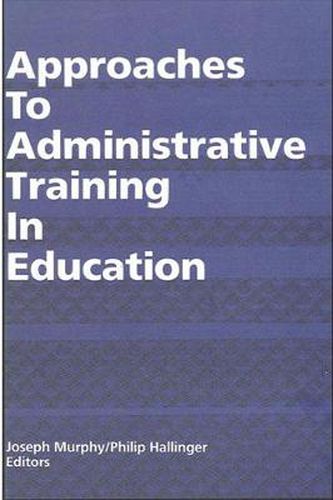Readings Newsletter
Become a Readings Member to make your shopping experience even easier.
Sign in or sign up for free!
You’re not far away from qualifying for FREE standard shipping within Australia
You’ve qualified for FREE standard shipping within Australia
The cart is loading…






In this important new collection Murphy and Hallinger bring together descriptions of a wide range of the new models in use in educational administrative training. Most of these eleven models have developed in response to contemporary criticism of the educational administrative theory movement, and each, in its own way, strives to bridge the chasm between educational theory and practice. The approaches represented here stress the importance of the administrators’ engagement in the daily life of the school, and encourage administrators to learn from one another. While some models have come from leadership academies, others have been developed and tested in state departments of education, professional associations, and educational institutions. The book represents an important resource for those working with pre- and inservice administrators as they learn ways in which their involvement can improve the nation’s schools.
$9.00 standard shipping within Australia
FREE standard shipping within Australia for orders over $100.00
Express & International shipping calculated at checkout
In this important new collection Murphy and Hallinger bring together descriptions of a wide range of the new models in use in educational administrative training. Most of these eleven models have developed in response to contemporary criticism of the educational administrative theory movement, and each, in its own way, strives to bridge the chasm between educational theory and practice. The approaches represented here stress the importance of the administrators’ engagement in the daily life of the school, and encourage administrators to learn from one another. While some models have come from leadership academies, others have been developed and tested in state departments of education, professional associations, and educational institutions. The book represents an important resource for those working with pre- and inservice administrators as they learn ways in which their involvement can improve the nation’s schools.